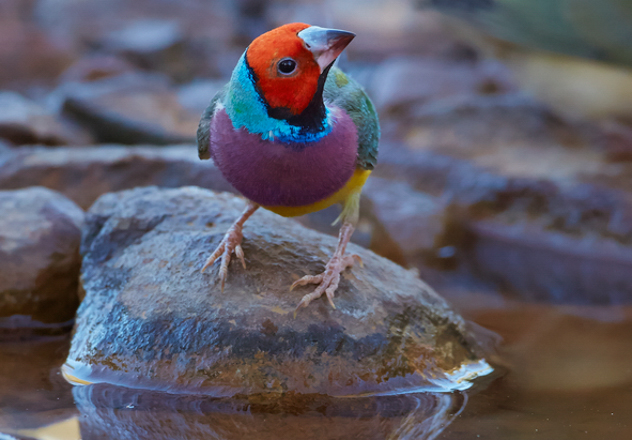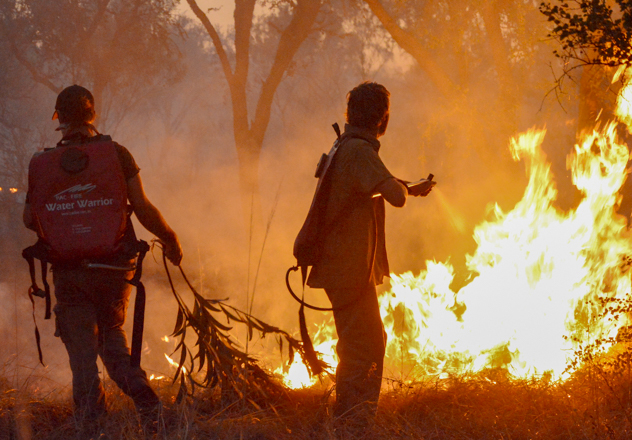Once found across northern Australia in their millions, in recent decades the population of the Gouldian Finch, has declined dramatically to an estimated 2,500 mature individuals. The species now only occurs in small flocks in a few locations in the Kimberley and the Northern Territory, although it is occasionally recorded in Queensland. Gouldian Finches live in tropical savanna woodland amongst the grassy understorey that contains a mixture of their preferred annual and perennial grass species.

 © Martin Willis
© Martin Willis
AWC protects one of the largest remaining populations of the Gouldian Finch at Mornington-Marion Downs, as well as smaller populations at Charnley River, Wongalara, Pungalina and possibly Brooklyn. AWC’s field ecologists are undertaking vitally important research which has helped identify what needs to be done to reverse the decline in Gouldian Finches. AWC delivers effective conservation for the Gouldian Finch by implementing effective fire management through prescribed burning and by removing feral herbivores.
 © Wayne Lawler/AWC
© Wayne Lawler/AWC
The primary threat to the survival of the Gouldian Finch is altered fire regimes – especially an increase in extensive, hot wildfires in the late dry season. Wildfires reduce the availability of seed at key times during the year and limit the availability of tree hollows for nesting. Other threats include feral herbivores (which selectively graze key grass species). Gouldian Finches can live to more than 5 years of age in the wild, but mortality rates are high in the first year due to these threats. In the past, many birds were captured for the aviary trade although this was banned in the 1980’s.

Description
Adult Gouldian Finches can be one of three different colour varieties: about 70-80% of birds have jet-black faces; 20-30% have scarlet faces; while gold-faced Gouldians are very rare (1 in 3000 birds). These colours exist through genetic variation (similar to the way in which humans can have blue, brown or green eyes).
Range and abundance
Found in tropical savanna woodland, Gouldian Finches eat almost entirely grass seeds, and nest in tree hollows (Snappy Gum or Northern White Gum Eucalyptus brevifolia in the western part of its range and Salmon Gum Eucalyptus tintinnans in the east).
We need your help to save Australia's endangered animals. $100 will fund fire management across 1,000 ha of Gouldian Finch habitat at Mornington
Donate NowMornington – Marion Downs is a model for conservation in northern Australia, protecting 580,772 hectares of the iconic Kimberley region.
Wongalara protects over 190,000 hectares of southern Arnhem Land, and includes the largest feral herbivore-free area on mainland Australia. It...
Tableland Partnership Area protects over 300,000 hectares of the remote central Kimberley, and provides a new model for integrating conservation...
AWC plays an important role in conserving the Yellow-footed Rock-wallaby in the central Flinders Ranges.
W. Lawler/AWCBurrowing Bettongs (or often referred to as Boodies in western and southern Australia), are a small, thick-set, kangaroo-like animal.
The Malleefowl is a large ground-dwelling bird and one of only three mound-building bird species in Australia.